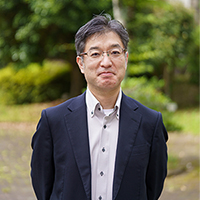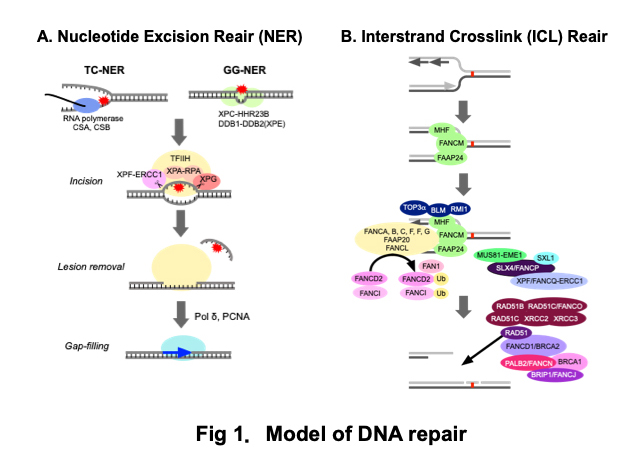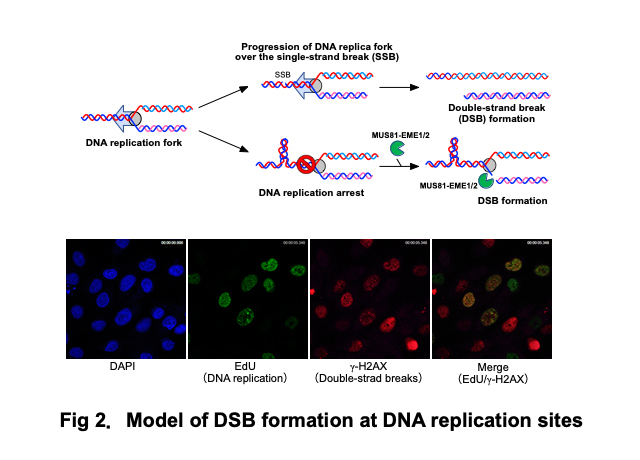- home
- >
- HANADA Katsuhiro home
- >
- Research
- >
- Research1

HANADA Katsuhiro
Investigation of the role of DNA repair pathways on maintenance of genome integrity.
Maintenance of genome integrity is essential for all organisms because genome information regulates cell proliferation, growth arrest, and vital metabolic processes in cells, tissues, organs, and organisms. However, our genomes are constantly exposed to endogenous and exogenous DNA damaging agents such as reactive oxidative species (ROSs), alkylating agents, bulky adducts, interstrand crosslinking (ICL) agents, and other genotoxic factors. ROSs and alkylating agents typically induce the chemical modification of bases in DNA, and DNA adducts and ICL agents covalently bound on the bases in DNA. These modifications cause the accumulation of mutations and stalled DNA replication forks. We found that stalled DNA replication forks often cause double-strand DNA breaks (DSBs) by the action of structure-specific endonucleases (Fig.1) (Hanada et al, 2006 & 2007; Kawashima et al, 2017; Inoue et al, 2021; Nishida et al, 2022).

Inhibition of DNA replication generates unreplicated regions on chromosomes, and such regions result in lesions and breaks during chromosome partitioning in mitosis, resulting in the formation of DSB. To prevent accumulations of mutations and chromosome instabilities, DNA-repair machinery and proper DNA damage responses (DDR) have evolved to eliminate genotoxic DNA lesions, thus maintaining the genome integrity suitably (Fig.2) (Hanada et al, 2007; Hashimoto et al, 2016; Terabayashi et al; 2018). In human, germline mutations in genes involved not only in DNA repairs but also in DDR machinery predispose hereditary diseases associated with genome instabilities. These genetic syndromes are often called "genome instability syndromes." Common features of these hereditary syndromes exhibit a high incidence of cancers and developmental abnormalities including short stature, microcephaly, and/or neurological deficiencies. Some of these syndromes show premature ageing symptoms. However, precisely how impaired DNA repair and/or dysfunctional DDR pathologically promote(s) these syndromes are poorly understood. In our laboratory, we would like to understand the mechanisms how mammalian cells maintain genome integrity with emphasis in roles of DNA repair pathways.

